1.
Introduction
Recently, fractional calculus has attained assimilated bounteous flow and significant importance due to its rife utility in the areas of technology and applied analysis. Fractional derivative operators have given a new rise to mathematical models such as thermodynamics, fluid flow, mathematical biology, and virology, see [1,2,3]. Previously, several researchers have explored different concepts related to fractional derivatives, such as Riemann-Liouville, Caputo, Riesz, Antagana-Baleanu, Caputo-Fabrizio, etc. As a result, this investigation has been directed at various assemblies of arbitrary order differential equations framed by numerous analysts, (see [4,5,6,7,8,9,10]). It has been perceived that the supreme proficient technique for deliberating such an assortment of diverse operators that attracted incredible presentation in research-oriented fields, for example, quantum mechanics, chaos, thermal conductivity, and image processing, is to manage widespread configurations of fractional operators that include many other operators, see the monograph and research papers [11,12,13,14,15,16,17,18,19,20,21,22].
In [23], the author proposed a novel idea of fractional operators, which is called GPF operator, that recaptures the Riemann-Liouville fractional operators into a solitary structure. In [24], the authors analyzed the existence of the FDEs as well as demonstrated the uniqueness of the GPF derivative by utilizing Kransnoselskii's fixed point hypothesis and also dealt with the equivalency of the mixed type Volterra integral equation.
Fractional calculus can be applied to a wide range of engineering and applied science problems. Physical models of true marvels frequently have some vulnerabilities which can be reflected as originating from various sources. Additionally, fuzzy sets, fuzzy real-valued functions, and fuzzy differential equations seem like a suitable mechanism to display the vulnerabilities marked out by elusiveness and dubiousness in numerous scientific or computer graphics of some deterministic certifiable marvels. Here we broaden it to several research areas where the vulnerability lies in information, for example, ecological, clinical, practical, social, and physical sciences [25,26,27].
In 1965, Zadeh [28] proposed fuzziness in set theory to examine these issues. The fuzzy structure has been used in different pure and applied mathematical analyses, such as fixed-point theory, control theory, topology, and is also helpful for fuzzy automata and so forth. In [29], authors also broadened the idea of a fuzzy set and presented fuzzy functions. This concept has been additionally evolved and the bulk of the utilization of this hypothesis has been deliberated in [30,31,32,33,34,35] and the references therein. The concept of HD has been correlated with fuzzy Riemann-Liouville differentiability by employing the Hausdorff measure of non-compactness in [36,37].
Numerous researchers paid attention to illustrating the actual verification of certain fuzzy integral equations by employing the appropriate compactness type assumptions. Different methodologies and strategies, in light of HD or generalized HD (see [38]) have been deliberated in several credentials in the literature (see for instance [39,40,41,42,43,44,45,46,47,48,49]) and we presently sum up quickly a portion of these outcomes. In [50], the authors proved the existence of solutions to fuzzy FDEs considering Hukuhara fractional Riemann-Liouville differentiability as well as the uniqueness of the aforesaid problem. In [51,52], the authors investigated the generalized Hukuhara fractional Riemann-Liouville and Caputo differentiability of fuzzy-valued functions. Bede and Stefanini [39] investigated and discovered novel ideas for fuzzy-valued mappings that correlate with generalized differentiability. In [43], Hoa introduced the subsequent fuzzy FDE with order ϑ∈(0,1):
where a fuzzy function is F:[σ1,σ2]×E→E with a nontrivial fuzzy constant Φ0∈E. The article addressed certain consequences on clarification of the fractional fuzzy differential equations and showed that the aforesaid equations in both cases (differential/integral) are not comparable in general. A suitable assumption was provided so that this correspondence would be effective. Hoa et al. [53] proposed the Caputo-Katugampola FDEs fuzzy set having the initial condition:
where 0<σ1<ζ≤σ2, cDϑ,ρσ+1 denotes the fuzzy Caputo-Katugampola fractional generalized Hukuhara derivative and a fuzzy function is F:[σ1,σ2]×E→E. An approach of continual estimates depending on generalized Lipschitz conditions was employed to discuss the actual as well as the uniqueness of the solution. Owing to the aforementioned phenomena, in this article, we consider a novel fractional derivative (merely identified as Hilfer GPF-derivative). Consequently, in the framework of the proposed derivative, we establish the basic mathematical tools for the investigation of GPF-FFHD which associates with a fractional order fuzzy derivative. We investigated the actuality and uniqueness consequences of the clarification to a fuzzy fractional IVP by employing GPF generalized HD by considering an approach of continual estimates via generalized Lipschitz condition. Moreover, we derived the FVFIE using a generalized fuzzy GPF derivative is presented. Finally, we demonstrate the problems of actual and uniqueness of the clarification of this group of equations. The Hilfer-GPF differential equation is presented as follows:
where Dϑ,q,βσ+1(.) is the Hilfer GPF-derivative of order ϑ∈(0,1),I1−γ,βσ1(.) is the GPF integral of order 1−γ>0,Rj∈R, and a continuous function F:[σ1,T]×R→R with νj∈[σ1,T] fulfilling σ<ν1<...<νm<T for j=1,...,m. To the furthest extent that we might actually know, nobody has examined the existence and uniqueness of solution (1.3) regarding FVFIEs under generalized fuzzy Hilfer-GPF-HD with fuzzy initial conditions. An illustrative example of fractional-order in the complex domain is proposed and provides the exact solution in terms of the Fox-Wright function.
The following is the paper's summary. Notations, hypotheses, auxiliary functions, and lemmas are presented in Section 2. In Section 3, we establish the main findings of our research concerning the existence and uniqueness of solutions to Problem 1.3 by means of the successive approximation approach. We developed the fuzzy GPF Volterra-Fredholm integrodifferential equation in Section 4. Section 5 consists of concluding remarks.
2.
Preliminaries
Throughout this investigation, E represents the space of all fuzzy numbers on R. Assume the space of all Lebsegue measureable functions with complex values F on a finite interval [σ1,σ2] is identified by χrc(σ1,σ2) such that
Then, the norm
Definition 2.1. ([53]) A fuzzy number is a fuzzy set Φ:R→[0,1] which fulfills the subsequent assumptions:
(1) Φ is normal, i.e., there exists ζ0∈R such that Φ(ζ0)=1;
(2) Φ is fuzzy convex in R, i.e, for δ∈[0,1],
(3) Φ is upper semicontinuous on R;
(4) [z]0=cl{z1∈R|Φ(z1)>0} is compact.
C([σ1,σ2],E) indicates the set of all continuous functions and set of all absolutely continuous fuzzy functions signifys by AC([σ1,σ2],E) on the interval [σ1,σ2] having values in E.
Let γ∈(0,1), we represent the space of continuous mappings by
Assume that a fuzzy set Φ:R↦[0,1] and all fuzzy mappings Φ:[σ1,σ2]→E defined on L([σ1,σ2],E) such that the mappings ζ→ˉD0[Φ(ζ),ˆ0] lies in L1[σ1,σ2].
There is a fuzzy number Φ on R, we write [Φ]ˇq={z1∈R|Φ(z1)≥ˇq} the ˇq-level of Φ, having ˇq∈(0,1].
From assertions (1) to (4); it is observed that the ˇq-level set of Φ∈E, [Φ]ˇq is a nonempty compact interval for any ˇq∈(0,1]. The ˇq-level of a fuzzy number Φ is denoted by [Φ_(ˇq),ˉΦ(ˇq)].
For any δ∈R and Φ1,Φ2∈E, then the sum Φ1+Φ2 and the product δΦ1 are demarcated as: [Φ1+Φ2]ˇq=[Φ1]ˇq+[Φ2]ˇq and [δ.Φ1]ˇq=δ[Φ1]ˇq, for all ˇq∈[0,1], where [Φ1]ˇq+[Φ2]ˇq is the usual sum of two intervals of R and δ[Φ1]ˇq is the scalar multiplication between δ and the real interval.
For any Φ∈E, the diameter of the ˇq-level set of Φ is stated as diam[μ]ˇq=ˉμ(ˇq)−μ_(ˇq).
Now we demonstrate the notion of Hukuhara difference of two fuzzy numbers which is mainly due to [54].
Definition 2.2. ([54]) Suppose Φ1,Φ2∈E. If there exists Φ3∈E such that Φ1=Φ2+Φ3, then Φ3 is known to be the Hukuhara difference of Φ1 and Φ2 and it is indicated by Φ1⊖Φ2. Observe that Φ1⊖Φ2≠Φ1+(−)Φ2.
Definition 2.3. ([54]) We say that ¯D0[Φ1,Φ2] is the distance between two fuzzy numbers if
where the Hausdroff distance between [Φ1]ˇq and [Φ2]ˇq is defined as
Fuzzy sets in E is also refereed as triangular fuzzy numbers that are identified by an ordered triple Φ=(σ1,σ2,σ3)∈R3 with σ1≤σ2≤σ3 such that [Φ]ˇq=[Φ_(ˇq),ˉΦ(ˇq)] are the endpoints of ˇq-level sets for all ˇq∈[0,1], where Φ_(ˇq)=σ1+(σ2−σ1)ˇq and ˉΦ(ˇq)=σ3−(σ3−σ2)ˇq.
Generally, the parametric form of a fuzzy number Φ is a pair [Φ]ˇq=[Φ_(ˇq),ˉΦ(ˇq)] of functions Φ_(ˇq),ˉΦ(ˇq),ˇq∈[0,1], which hold the following assumptions:
(1) μ_(ˇq) is a monotonically increasing left-continuous function;
(2) ˉμ(ˇq) is a monotonically decreasing left-continuous function;
(3) μ_(ˇq)≤ˉμ(ˇq),ˇq∈[0,1].
Now we mention the generalized Hukuhara difference of two fuzzy numbers which is proposed by [38].
Definition 2.4. ([38]) The generalized Hukuhara difference of two fuzzy numbers Φ1,Φ2∈E (gH-difference in short) is stated as follows
A function Φ:[σ1,σ2]→E is said to be d-increasing (d-decreasing) on [σ1,σ2] if for every ˇq∈[0,1]. The function ζ→diam[Φ(ζ)]ˇq is nondecreasing (nonincreasing) on [σ1,σ2]. If Φ is d-increasing or d-decreasing on [σ1,σ2], then we say that Φ is d-monotone on [σ1,σ2].
Definition 2.5. ([39])The generalized Hukuhara derivative of a fuzzy-valued function F:(σ1,σ2)→E at ζ0 is defined as
if (F)′gH(ζ0)∈E, we say that F is generalized Hukuhara differentiable (gH-differentiable) at ζ0.
Moreover, we say that F is [(i)−gH]-differentiable at ζ0 if
and that F is [(ii)−gH]-differentiable at ζ0 if
Definition 2.6. ([49]) We state that a point ζ0∈(σ1,σ2), is a switching point for the differentiability of F, if in any neighborhood U of ζ0 there exist points ζ1<ζ0<ζ2 such that
Type Ⅰ. at ζ1 (2.1) holds while (2.2) does not hold and at ζ2 (2.2) holds and (2.1) does not hold, or
Type Ⅱ. at ζ1 (2.2) holds while (2.1) does not hold and at ζ2 (2.1) holds and (2.2) does not hold.
Definition 2.7. ([23]) For β∈(0,1] and let the left-sided GPF-integral operator of order ϑ of F is defined as follows
where β∈(0,1], ϑ∈C, Re(ϑ)>0 and Γ(.) is the Gamma function.
Definition 2.8. ([23]) For β∈(0,1] and let the left-sided GPF-derivative operator of order ϑ of F is defined as follows
where β∈(0,1], ϑ∈C,Re(ϑ)>0,n=[ϑ]+1 and Dn,β represents the nth-derivative with respect to proportionality index β.
Definition 2.9. ([23]) For β∈(0,1] and let the left-sided GPF-derivative in the sense of Caputo of order ϑ of F is defined as follows
where β∈(0,1], ϑ∈C,Re(ϑ)>0 and n=[ϑ]+1.
Let Φ∈L([σ1,σ2],E), then the GPF integral of order ϑ of the fuzzy function Φ is stated as:
Since [Φ(ζ)]ˇq=[Φ_(ˇq,ζ),ˉΦ(ˇq,ζ)] and 0<ϑ<1, we can write the fuzzy GPF-integral of the fuzzy mapping Φ depend on lower and upper mappingss, that is,
where
and
Definition 2.10. For n∈N, order ϑ and type q hold n−1<ϑ≤n with 0≤q≤1. The left-sided fuzzy Hilfer-proportional gH-fractional derivative, with respect to ζ having β∈(0,1] of a function ζ∈Cβ1−γ[σ1,σ2], is stated as
where DβΦ(ν)=(1−β)Φ(ν)+βΦ′(ν) and if the gH-derivative Φ′(1−ϑ),β(ζ) exists for ζ∈[σ1,σ2], where
Definition 2.11. Let Φ′∈L([σ1,σ2],E) and the fractional generalized Hukuhara GPF-derivative of fuzzy-valued function Φ is stated as:
Furthermore, we say that Φ is GPF[(i)−gH]-differentiable at ζ0 if
and that Φ is GPF[(i)−gH]-differentiable at ζ0 if
Definition 2.12. We say that a point ζ0∈(σ1,σ2), is a switching point for the differentiability of F, if in any neighborhood U of ζ0 there exist points ζ1<ζ0<ζ2 such that
Type Ⅰ. at ζ1 (2.11) holds while (2.12) does not hold and at ζ2 (2.12) holds and (2.11) does not hold, or
Type Ⅱ. at ζ1 (2.12) holds while (2.11) does not hold and at ζ2 (2.11) holds and (2.12) does not hold.
Proposition 1. ([23]) Let ϑ,ϱ∈C such that Re(ϑ)>0 and Re(ϱ)>0. Then for any β∈(0,1], we have
Lemma 2.13. ([24])For β∈(0,1], ϑ>0, 0≤γ<1. If Φ∈Cγ[σ1,σ2] and I1−ϑσ+1Φ∈C1γ[σ1,σ2], then
Lemma 2.14. ([24]) Let Φ∈L1(σ1,σ2). If Dq(1−ϑ),βσ+1Φ exists on L1(σ1,σ2), then
Lemma 2.15. Suppose there is a d-monotone fuzzy mapping Φ∈AC([σ1,σ2],E), where [Φ(ζ)]ˇq=[Φ_(ˇq,ζ),ˉΦ(ˇq,ζ)] for 0≤ˇq≤1,σ1≤ζ≤σ2, then for 0<ϑ<1 and β∈(0,1], we have
(i)[(Dϑ,q,βσ+1Φ)(ζ)]ˇq=[Dϑ,q,βσ+1Φ_(ˇq,ζ),Dϑ,q,βσ+1ˉΦ(ˇq,ζ)] for ζ∈[σ1,σ2], if Φ is d-increasing;
(ii)[(Dϑ,q,βσ+1Φ)(ζ)]ˇq=[Dϑ,q,βσ+1ˉΦ(ˇq,ζ),Dϑ,q,βσ+1Φ_(ˇq,ζ)] for ζ∈[σ1,σ2], if Φ is d-decreasing.
Proof. It is to be noted that if Φ is d-increasing, then [Φ′(ζ)]ˇq=[ddζΦ_(ˇq,ζ),ddζˉΦ(ˇq,ζ)]. Taking into account Definition 2.10, we have
If Φ is d-decreasing, then [Φ′(ζ)]ˇq=[ddζˉΦ(ˇq,ζ),ddζΦ_(ˇq,ζ)], we have
This completes the proof.
Lemma 2.16. For β∈(0,1],ϑ∈(0,1). If Φ∈AC([σ1,σ2],E) is a d-monotone fuzzy function. We take
and
is d-increasing on (σ1,σ2], then
and
Proof. If z1(ζ) is d-increasing on [σ1,σ2] or z1(ζ) is d-decreasing on [σ1,σ2] and z(1−ϑ),β1(ζ) is d-increasing on (σ1,σ2].
Utilizing the Definitions 2.6, 2.10 and Lemma 2.13 with the initial condition (I1−γ,βσ+1Φ)(σ1)=0, we have
Now considering Proposition 1, Lemma 2.13 and Lemma 2.14, we obtain
On contrast, since Φ∈AC([σ1,σ2],E), there exists a constant K such that K=supζ∈[σ1,σ2]¯D0[Φ(ζ),ˆ0].
Then
where we have used the fact |eβ−1βζ|<1 and Iϑ,βσ+1Φ(ζ)=0 and ζ=σ1.
This completes the proof.
Lemma 2.17. Let there be a continuous mapping Φ:[σ1,σ2]→R+ on [σ1,σ2] and hold Dϑ,q,βσ+1Φ(ζ)≤F(ξ,Φ(ξ)),ξ≥σ1, where F∈C([σ1,σ1]×R+,R+). Assume that m(ζ)=m(ζ,σ1,ξ0) is the maximal solution of the IVP
on [σ1,σ2]. Then, if Φ(σ1)≤ξ0, we have Φ(ζ)≤m(ζ),ζ∈[σ1,σ2].
Proof. The proof is simple and can be derived as parallel to Theorem 2.2 in [53].
Lemma 2.18. Assume the IVP described as:
Let α>0 be a given constant and B(Φ0,α)={Φ∈R:|Φ−Φ0|≤α}. Assume that the real-valued functions F:[σ1,σ2]×[0,α]→R+ satisfies the following assumptions:
(i) F∈C([σ1,σ2]×[0,α],R+),F(ζ,0)≡0,0≤F(ζ,Φ)≤MF for all (ζ,Φ)∈[σ1,σ2]×[0,α];
(ii) F(ζ,Φ) is nondecreasing in Φ for every ζ∈[σ1,σ2]. Then the problem (2.15) has at least one solution defined on [σ1,σ2] and Φ(ζ)∈B(Φ0,α).
Proof. The proof is simple and can be derived as parallel to Theorem 2.3 in [53].
3.
Main results and discussion
In this investigation, we find the existence and uniqueness of solution to problem 1.3 by utilizing the successive approximation technique by considering the generalized Lipschitz condition of the right-hand side.
Lemma 3.1. For γ=ϑ+q(1−ϑ),ϑ∈(0,1),q∈[0,1] with β∈(0,1], and let there is a fuzzy function F:(σ1,σ2]×E→E such that ζ→F(ζ,Φ) belongs to Cβγ([σ1,σ2],E) for any Φ∈E. Then a d-monotone fuzzy function Φ∈C([σ1,σ2],E) is a solution of IVP (1.3) if and only if Φ satisfies the integral equation
and the fuzzy function ζ→I1−γσ+1F(ζ,Φ) is d-increasing on (σ1,σ2].
Proof. Let Φ∈C([σ1,σ2],E) be a d-monotone solution of (1.3), and considering z1(ζ):=Φ(ζ)⊖gH(I1−γ,βσ+1Φ)(σ1),ζ∈(σ1,σ2]. Since Φ is d-monotone on [σ1,σ2], it follows that ζ→z1(ζ) is d-increasing on [σ1,σ2] (see [43]).
From (1.3) and Lemma 2.16, we have
Since F(ζ,Φ)∈Cγ([σ1,σ2],E) for any Φ∈E, and from (1.3), observes that
Additionally, since z1(ζ) is d-increasing on (σ1,σ2]. Also, we observe that ζ→Fϑ,β(ζ,Φ) is also d-increasing on (σ1,σ2].
Reluctantly, merging (3.2) and (3.3), we get the immediate consequence.
Further, suppose Φ∈C([σ1,σ2],E) be a d-monotone fuzzy function fulfills (3.1) and such that ζ→Fϑ,β(ζ,Φ) is d-increasing on (σ1,σ2]. By the continuity of the fuzzy mapping F, the fuzzy mapping ζ→Fϑ,β(ζ,Φ) is continuous on (σ1,σ2] with Fϑ,β(σ1,Φ(σ1))=limζ→σ+1Fϑ,β(ζ,Φ)=0. Then
and
Moreover, since ζ→Fϑ,β(ζ,Φ) is d-increasing on (σ1,σ2]. Applying, the operator Dϑ,q,βσ+1 on (3.1), yields
This completes the proof.
In our next result, we use the following assumption. For a given constant ℏ>0, and let B(Φ0,ℏ)={Φ∈E:¯D0[Φ,Φ0]≤ℏ}.
Theorem 3.2. Let F∈C([σ1,σ2]×B(Φ0,ℏ),E) and suppose that the subsequent assumptions hold:
(i) there exists a positive constant MF such that ¯D0[F(ζ,z1),ˆ0]≤MF, for all (ζ,z1)∈[σ1,σ2]×B(Φ0,ℏ);
(ii) for every ζ∈[σ1,σ2] and every z1,ω∈B(Φ0,ℏ),
where g(ζ,.)∈C([σ1,σ2]×[0,β],R+) satisfies the assumption in Lemma 2.18 given that problem (2.15) has only the solution ϕ(ζ)≡0 on [σ1,σ2]. Then the subsequent successive approximations given by Φ0(ζ)=Φ0 and for n=1,2,...,
converges consistently to a fixed point of problem (1.3) on certain interval [σ1,T] for some T∈(σ1,σ2] given that the mapping ζ→Iϑ,βσ+1F(ζ,Φn(ζ)) is d-increasing on [σ1,T].
Proof. Take σ1<ζ∗ such that ζ∗≤[βϑℏ.Γ(1+ϑ)M+σ1]1ϑ, where M=max{Mg,MF} and put T:=min{ζ∗,σ2}. Let S be a set of continuous fuzzy functions Φ such that ω(σ1)=Φ0 and ω(ζ)∈B(Φ0,ℏ) for all ζ∈[σ1,T]. Further, we suppose the sequence of continuous fuzzy function {Φn}∞n=0 given by Φ0(ζ)=Φ0,∀ζ∈[σ1,T] and for n=1,2,..,
Firstly, we show that Φn(ζ)∈C([σ1,T],B(Φ0,ℏ)). For n≥1 and for any ζ1,ζ2∈[σ1,T] with ζ1<ζ2, we have
Using the fact that |eβ−1βζ|<1, then, on the right-hand side from the last inequality, the subsequent integral becomes 1βϑΓ(1+ϑ)(ζ2−ζ1)ϑ. Therefore, with the similar assumption as we did above, the first integral reduces to 1βϑΓ(1+ϑ)[(ζ1−σ1)ϑ−(ζ2−σ1)ϑ+(ζ2−ζ1)ϑ]. Thus, we conclude
In the limiting case as \zeta_{1}\rightarrow \zeta_{2}, then the last expression of the above inequality tends to 0, which shows \Phi^{n} is a continuous function on [\sigma_{1}, \mathcal{T}] for all n\geq1.
Moreover, it follows that \Phi^{n}\in\mathfrak{B}(\Phi_{0}, \hbar) for all n\geq0, \, \zeta\in[\sigma_{1}, \mathcal{T}] if and only if \Phi^{n}(\zeta)\ominus_{\mathfrak{g}H}\frac{\sum\limits_{j = 1}^{m}R_{j}\Phi(\zeta_{j})}{\beta^{\gamma}\Gamma(\gamma)}e^{\frac{\beta-1}{\beta}(\zeta-\sigma_{1})}(\zeta-\sigma_{1})^{\gamma-1}\in\mathfrak{B}(0, \hbar) for all \zeta\in[\sigma_{1}, \mathcal{T}] and for all n\geq0.
Also, if we assume that \Phi^{n-1}(\zeta)\in\mathbb{S} for all \zeta\in[\sigma_{1}, \mathcal{T}], \, n\geq2, then
It follows that \Phi^{n}(\zeta)\in\mathbb{S}, \, \forall\in[\sigma_{1}, \mathcal{T}].
Henceforth, by mathematical induction, we have \Phi^{n}(\zeta)\in\mathbb{S}, \, \, \forall \zeta\in[\sigma_{1}, \mathcal{T}] and \forall\, n\geq1.
Further, we show that the sequence \Phi^{n}(\zeta) converges uniformly to a continuous function \Phi\in\mathcal{C}([\sigma_{1}, \mathcal{T}], \mathfrak{B}(\Phi_{0}, \hbar)). By assertion (ii) and mathematical induction, we have for \zeta\in[\sigma_{1}, \mathcal{T}]
where \phi^{n}(\zeta) is defined as follows:
where we have used the fact that \vert e^{\frac{\beta-1}{\beta}\zeta}\vert < 1 and \phi^{0}(\zeta) = \frac{\mathcal{M}(\zeta-\sigma_{1})^{\vartheta}}{\beta^{{\vartheta}}\Gamma({\vartheta}+1)}. Thus, we have, for \zeta\in[\sigma_{1}, \mathcal{T}] and for n = 0, 1, 2, ...,
Let n\leq m and \zeta\in[\sigma_{1}, \mathcal{T}], then one obtains
From (ii), we observe that the solution \phi(\zeta) = 0 is a unique solution of problem (2.15) and \mathfrak{g}(., \phi^{n-1}):[\sigma_{1}, \mathcal{T}]\rightarrow [0, \mathcal{M}_{\mathfrak{g}}] uniformly converges to 0 , for every \epsilon > 0, there exists a natural number n_{0} such that
Using the fact that \bar{\mathcal{D}_{0}}\big[\Phi^{n}(\sigma_{1}), \Phi^{m}(\sigma_{1})\big] = 0 < \epsilon and by using Lemma 2.17, we have for \zeta\in[\sigma_{1}, \mathcal{T}]
where \delta_{\epsilon}(\zeta) is the maximal solution to the following IVP:
Taking into account Lemma 2.17, we deduce that [\phi_{\epsilon}(., \omega)] converges uniformly to the maximal solution \phi(\zeta) \equiv0 of (2.15) on [\sigma_{1}, \mathcal{T}] as \epsilon\rightarrow 0.
Therefore, in view of (3.8), we can obtain n_{0}\in\mathbb{N} is large enough such that, for n_{0} < n, m,
Since (\mathfrak{E}, \bar{\mathcal{D}_{0}}) is a complete metric space and (3.9) holds, thus \big\{\Phi^{n}(\zeta)\} converges uniformly to \Phi\in\mathcal{C}([\sigma_{1}, \sigma_{2}], \mathfrak{B}(\Phi_{0}, \hbar)). Hence
Because of Lemma 3.1, the function \Phi(\zeta) is the solution to (1.3) on [\sigma_{1}, \mathcal{T}].
In order to find the unique solution, assume that \Psi:[\sigma_{1}, \mathcal{T}]\rightarrow \mathfrak{E} is another solution of problem (1.3) on [\sigma_{1}, \mathcal{T}]. We denote \kappa(\zeta) = \bar{\mathcal{D}_{0}}[\Phi(\zeta), \Psi(\zeta)]. Then \kappa(\sigma_{1}) = 0 and for every \zeta\in[\sigma_{1}, \mathcal{T}], we have
Further, using the comaprison Lemma 2.17, we get \kappa(\zeta)\leq m(\zeta), where m is a maximal solution of the IVP \mathcal{D}_{\sigma_{1}^{+}}^{\vartheta, \mathfrak{q}, \beta}m(\zeta)\leq\mathfrak{g}(\zeta, m(\zeta)), \, \big(\mathcal{I}_{\sigma_{1}^{+}}^{1-\gamma}m\big)(\sigma_{1}) = 0. By asseration (ii), we have m(\zeta) = 0 and hence \Phi(\zeta) = \Psi(\zeta), \, \forall\in[\sigma_{1}, \mathcal{T}].
This completes the proof.
Corollary 1. For \beta\in(0, 1] and let \mathcal{C}([\sigma_{1}, \sigma_{2}], \mathfrak{E}). Assume that there exist positive constants \mathcal{L}, \mathcal{M}_{\mathcal{F}} such that, for every z_{1}, \omega\in\mathfrak{E},
Then the subsequent successive approximations given by \Phi^{0}(\zeta) = \Phi_{0} and for n = 1, 2, ..
converges consistently to a fixed point of problem (1.3) on [\sigma_{1}, \mathcal{T}] for certain \mathcal{T}\in(\sigma_{1}, \sigma_{2}] given that the mapping \zeta\rightarrow \mathcal{I}_{\sigma_{1}^{+}}^{\vartheta, \beta}\mathcal{F}(\zeta, \Phi^{n}(\zeta)) is \mathfrak{d} -increasing on [\sigma_{1}, \mathcal{T}].
Example 3.3. For \beta\in(0, 1], \, \gamma = \vartheta+\mathfrak{q}(1-\vartheta), \, \vartheta\in(0, 1), \, \mathfrak{q}\in[0, 1] and \delta\in\mathbb{R}. Assume that the linear fuzzy \mathcal{GPF} - FDE under Hilfer- \mathcal{GPF} -derivative and moreover, the subsequent assumptions hold:
Applying Lemma 3.1, we have
where \eta\in\mathcal{C}((\sigma_{1}, \sigma_{2}], \mathfrak{E}) and furthermore, assuming the diameter on the right part of the aforementioned equation is increasing. Observing \mathcal{F}(\zeta, \Phi): = \delta\Phi+\eta fulfill the suppositions of Corollary 1.
In order to find the analytical view of (3.12), we utilized the technique of successive approximation. Putting \Phi^{0}(\zeta) = \Phi_{0} and
Letting n = 1, \; \delta > 0, assuming there is a \mathfrak{d} -increasing mapping \Phi, then we have
In contrast, if we consider \delta < 0 and \Phi is \mathfrak{d} -decreasing, then we have
For n = 2 , we have
if \delta > 0 and there is \mathfrak{d} -increasing mapping \Phi , we have
and there is \delta < 0, \, and\, \mathfrak{d} -increasing mapping \Phi. So, continuing inductively and in the limiting case, when n\rightarrow \infty, we attain the solution
for every \delta > 0 and \Phi is \mathfrak{d} -increasing, or \delta < 0 and \Phi is \mathfrak{d} -decreasing, accordingly. Therefore, by means of Mittag-Leffler function \mathcal{E}_{\vartheta, \mathfrak{q}}(\Phi) = \sum\limits_{l = 1}^{\infty}\frac{\Phi^{\kappa}}{\Gamma(l\vartheta+\mathfrak{q})}, \, \vartheta, \mathfrak{q} > 0, the solution of problem (3.12) is expressed by
for every of \delta > 0 and \Phi is \mathfrak{d} -increasing. Alternately, if \delta < 0 and \Phi is \mathfrak{d} -decreasing, then we get the solution of problem (3.12)
4.
Fuzzy generalized proportional \mathcal{FVFIDE}
Consider IVP
where \beta\in(0, 1] and \vartheta\in(0, 1) is a real number and the operation _{\mathfrak{g}H}\mathcal{D}_{\sigma_{1}^{+}}^{\vartheta} denote the \mathcal{GPF} derivative of order \vartheta, \mathcal{F}:[\zeta_{0}, \mathcal{T}]\times\mathfrak{E}\times\mathfrak{E}\times\mathfrak{E}\rightarrow \mathfrak{E} is continuous in \zeta which fulfills certain supposition that will be determined later, and
with \mathcal{H}_{1}, \mathcal{H}_{2}:[\zeta_{0}, \mathcal{T}]\times[\zeta_{0}, \mathcal{T}]\rightarrow \mathbb{R} such that
Now, we investigate the existence and uniqueness of the solution of problem (4.1). To establish the main consequences, we require the following necessary results.
Theorem 4.1. Let \mathcal{F}:[\sigma_{1}, \sigma_{2}]\rightarrow \mathfrak{E} be a fuzzy-valued function on [\sigma_{1}, \sigma_{2}]. Then
(i) \mathcal{F} is [(i)-\mathfrak{g}H] -differentiable at c\in[\sigma_{1}, \sigma_{2}] iff \mathcal{F} is \, ^{GPF}[(i)-\mathfrak{g}H] -differentiable at c.
(ii) \mathcal{F} is [(ii)-\mathfrak{g}H] -differentiable at c\in[\sigma_{1}, \sigma_{2}] iff \mathcal{F} is \, ^{GPF}[(ii)-\mathfrak{g}H] -differentiable at c.
Proof. In view of Definition 2.18 and Definition 2.11, the proof is straightforward.
Lemma 4.2. ([44]) Let there be a fuzzy valued mapping \mathcal{F}:[\zeta_{0}, \mathcal{T}]\rightarrow \mathfrak{E} such that \mathcal{F}^{\prime}_{\mathfrak{g}H}\in\mathfrak{E}\cap\chi_{c}^{r}(\sigma_{1}, \sigma_{2}), then
Lemma 4.3. The IVP (4.1) is analogous to subsequent equation
if \Phi(\zeta) be \, ^{GPF}[(i)-\mathfrak{g}H] -differentiable,
if \Phi(\zeta) be \, ^{GPF}[(ii)-\mathfrak{g}H] -differentiable, and
if there exists a point \sigma_{3}\in(\sigma_{1}, \sigma_{2}) such that \Phi(\zeta) is \, ^{GPF}[(i)-\mathfrak{g}H] -differentiable on [\sigma_{1}, \sigma_{3}] and \, ^{GPF}[(ii)-\mathfrak{g}H] -differentiable on [\sigma_{3}, \sigma_{2}] and \mathcal{F}(\sigma_{3}, \Phi(\sigma_{3}, \Phi(\sigma_{3}), \mathcal{H}_{1}\Phi(\sigma_{3}))\in\mathbb{R}.
Proof. By means of the integral operator (2.6) on both sides of (4.1), yields
Utilizing Lemma 4.2 and Definition 2.6, we gat
In view of Defnition 2.17 and Theorem 4.1, if \Phi(\zeta) be \, ^{GPF}[(i)-\mathfrak{g}H] -differentiable,
and if \Phi(\zeta) be \, ^{GPF}[(ii)-\mathfrak{g}H] -differentiable
In addition, when we have a switchpoint \sigma_{3}\in(\sigma_{1}, \sigma_{2}) of type (I) the \, ^{GPF}[\mathfrak{g}H] -differentiability changes from type (I) to type (II) at \zeta = \sigma_{3}. Then by (4.9) and (4.10) and Definition 2.12, The proof is easy to comprehend.
Also, we proceed with the following assumptions:
({\mathbb{A}_{1}}). \mathcal{F}:[\zeta_{0}, \mathcal{T}]\times\mathfrak{E}\times\mathfrak{E}\times\mathfrak{E}\rightarrow \mathfrak{E} is continuous and there exist positive real functions \mathcal{L}_{1}, \mathcal{L}_{2}, \mathcal{L}_{3} such that
({\mathbb{A}_{2}}). There exist a number \epsilon such that \delta\leq\epsilon < 1, \, \zeta\in[\zeta_{0}, \mathcal{T}]
and
Theorem 4.4. Let \mathcal{F}:[\zeta_{0}, \mathcal{T}]\times\mathfrak{E}\times\mathfrak{E}\times\mathfrak{E}\rightarrow \mathfrak{E} be a bounded continuous functions and holds (\mathbb{A}_{1}). Then the IVP (4.1) has a unique solution which is \, ^{GPF}[(i)-\mathfrak{g}H] -differentiable on [\zeta_{0}, \mathcal{T}], given that \delta < 1, where \delta is given in (\mathbb{A}_{2}).
Proof. Assuming \Phi(\zeta) is \, ^{GPF}[(i)-\mathfrak{g}H] -differentiability and \Phi_{0}\in\mathfrak{E} be fixed. Propose a mapping \mathfrak{F}:\mathcal{C}([\zeta_{0}, \mathcal{T}], \mathfrak{E})\rightarrow \mathcal{C}([\zeta_{0}, \mathcal{T}], \mathfrak{E}) by
Next we prove that \mathfrak{F} is contraction. For \Phi, \Psi\in\mathcal{C}([\zeta_{0}, \mathcal{T}], \mathfrak{E}) by considering of (\mathbb{A}_{1}) and by distance properties (2.3), one has
Now, we find that
Analogously,
Then we have
Consequently, \mathfrak{F} is a contraction mapping on \mathcal{C}([\zeta_{0}, \mathcal{T}], \mathfrak{E}) having a fixed point \mathfrak{F}\Phi(\zeta) = \Phi(\zeta). Henceforth, the IVP (4.1) has unique solution.
Theorem 4.5. For \beta\in(0, 1] and let \mathcal{F}:[\zeta_{0}, \mathcal{T}]\times\mathfrak{E}\times\mathfrak{E}\times\mathfrak{E}\rightarrow \mathfrak{E} be a bounded continuous functions and satisfies (\mathbb{A}_{1}). Let the sequence \Phi_{n}:[\zeta_{0}, \mathcal{T}]\rightarrow \mathfrak{E} is given by
is described for any n\in\mathbb{N}. Then the sequence \{\Phi_{n}\} converges to fixed point of problem (4.1) which is \, ^{GPF}[(ii)-\mathfrak{g}H] -differentiable on [\zeta_{0}, \mathcal{T}], given that \delta < 1, where \delta is defined in (\mathbb{A}_{2}).
Proof. We now prove that the sequence \{\Phi_{n}\} , given in (4.16), is a Cauchy sequence in \mathcal{C}([\zeta_{0}, \mathcal{T}], \mathfrak{E}). To do just that, we'll require
where \mathcal{M} = \sup_{\zeta\in[\zeta_{0}, \mathcal{T}]}\bar{\mathcal{D}_{0}}\big(\mathcal{F}(\zeta, \Phi, \mathcal{H}_{1}\Phi, \mathcal{H}_{2}\Phi), \hat{0}\big).
Since \mathcal{F} is Lipschitz continuous, In view of Definition (2.3), we show that
Since \delta < 1 promises that the sequence \{\Phi_{n}\} is a Cauchy sequence in \mathcal{C}([\zeta_{0}, \mathcal{T}], \mathfrak{E}). Consequently, there exist \Phi\in\mathcal{C}([\zeta_{0}, \mathcal{T}], \mathfrak{E}) such that \{\Phi_{n}\} converges to \Phi. Thus, we need to illustrate that \Phi is a solution of the problem (4.1).
In the limiting case, when n\rightarrow \infty. Thus we have
By Lemma 4.3, we prove that \Phi is a solution of the problem (4.1). In order to prove the uniqness of \Phi(\zeta), let \Psi(\zeta) be another solution of problem (4.1) on [\zeta_{0}, \mathcal{T}]. Utilizing Lemma 4.3, gets
Analogously, by employing the distance properties \bar{\mathcal{D}}_{0} and Lipschitiz continuity of \mathcal{F}, consequently, we deduce that (1-\delta)\bar{\mathcal{D}_{0}}(\Phi, \Psi)\leq0, since \delta < 1, we have \Phi(\zeta) = \Psi(\zeta) for all \zeta\in[\zeta_{0}, \mathcal{T}]. Hence, the proof is completed.
Example 4.6. Suppose the Cauchy problem by means of differential operator (2.4)
where \mathcal{F}(z, \Phi(z)) is analytic in \Phi and \Phi(z) is analytic in the unit disk. Therefore, \mathcal{F} can be written as
Consider \mathcal{Z} = z^{\vartheta}. Then the solution can be formulated as follows:
where \Phi_{j} are constants. Putting (4.22) in (4.21), yields
Since
then the simple computations gives the expression
Consequently, we get
Therefore, we have the subsequent solution
or equivalently
where \varphi is assumed to be arbitrary constant, we take
Therefore, for appropriate \vartheta, we have
where \vert z\vert < 1.
5.
Conclusions
The present investigation deal with an IVP for \mathcal{GPF} fuzzy FDEs and we employ a new scheme of successive approximations under generalized Lipschitz condition to obtain the existence and uniqueness consequences of the solution to the specified problem. Furthermore, another method to discover exact solutions of \mathcal{GPF} fuzzy FDEs by utilizing the solutions of integer order differential equations is considered. Additionally, the existence consequences for \mathcal{FVFIDE}s under \mathcal{GPF} - \mathcal{HD} with fuzzy initial conditions are proposed. Also, the uniqueness of the so-called integrodifferential equations is verified. Meanwhile, we derived the equivalent integral forms of the original fuzzy \mathcal{FVFIDE}s whichis utilized to examine the convergence of these arrangements of conditions. Two examples enlightened the efficacy and preciseness of the fractional-order \mathcal{HD} and the other one presents the exact solution by means of the Fox-Wright function. For forthcoming mechanisms, we will relate the numerical strategies for the estimated solution of nonlinear fuzzy FDEs.
Acknowledgments
The authors would like to express their sincere thanks to the support of Taif University Researchers Supporting Project Number (TURSP-2020/217), Taif University, Taif, Saudi Arabia.
Conflict of interest
The authors declare that they have no competing interests.











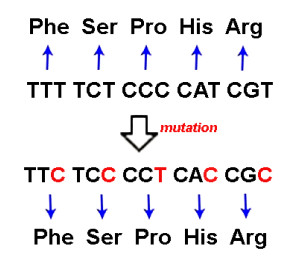
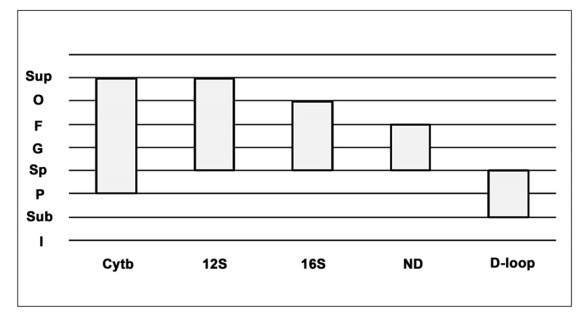
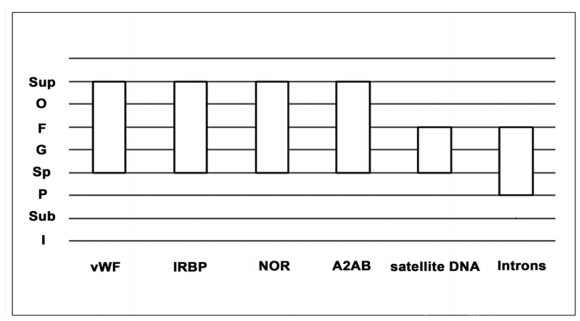
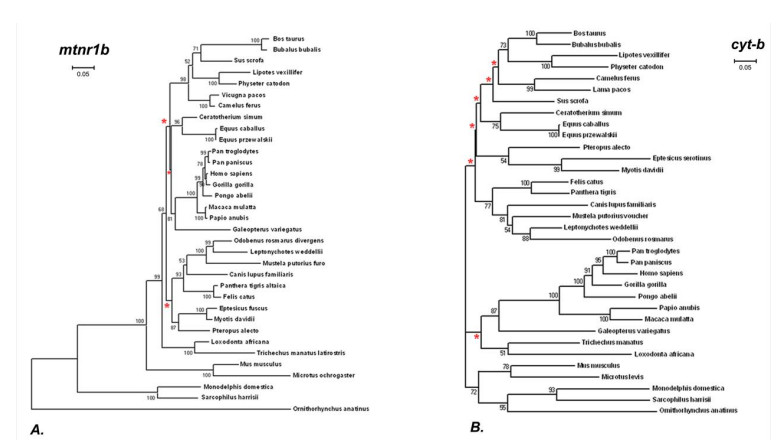
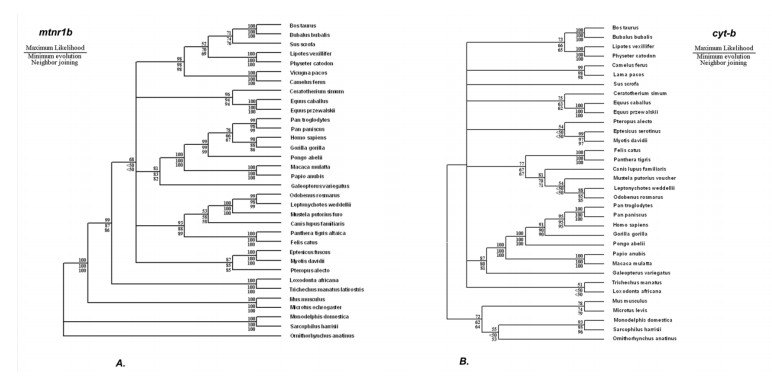
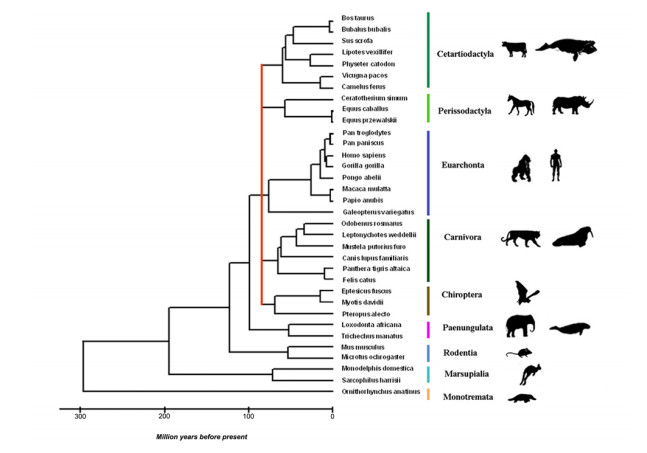


 DownLoad:
DownLoad: